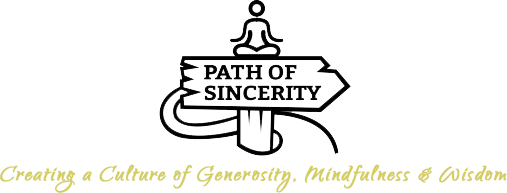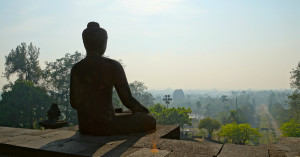
I practice and teach a style of Buddhist meditation called Vipassana (aka Insight Meditation).
1) What is Vipassana meditation?
2) Why are we shifting our basic perceptions?
3) What are we shifting our basic perceptions towards?
4) How do we actually, tangibly, realistically, make this happen?
5) What is the quickest, most efficient way to really learn Vipassana?
 1) What is Vipassana Meditation?
1) What is Vipassana Meditation?
For starters, Vipassana meditation is not a technique or method. It does not mean body scanning, breath meditation, open awareness, mental noting or paying attention.
Instead, Vipassana is more of an approach—it’s about developing a certain lens, or way of seeing reality. The word Vipassana is a Sanskrit term that literally translates to English as “to see things as they really are.”
In other words, Vipassana engages in mindfulness techniques, like those just mentioned, not as an end in and of them themselves, but in order to shift our basic perceptions of reality to be in alignment with truth.
 2) Why are we shifting our basic perceptions?
2) Why are we shifting our basic perceptions?
It’s important to understand that Vipassana is not a stand-alone meditation approach. Instead, it is just one facet of the greater Buddhist system, whose primary purpose is to move away from suffering, and towards deeper well-being.
This process involves things like developing generosity, kindness and integrity, as well as peaceful & joyous meditative states. However, at its climax is enlightenment — a radical letting go of clinging and grasping. A profound inner freedom and peace.
And how do we move towards this radically deep non-clinging? By seeing things as they really are. For example:
- If we’re holding a stovetop pan and the temperature is slowly increasing, when we are clearly aware that it’s too hot, we let it go.
- When we see deeply that our grumpy mood is causing us unnecessary stress, we release it.
- When we see clearly that churning through compulsive thoughts is a subtle form of suffering, we stop doing it.
- We when see clearly that our bad habits are mostly made up of a desire to feel good now, we can break free from that cycle.
In other words, the idea of Vipassana is that when can see more clearly what’s actually happening, it sets the stage for us to be able to let go.
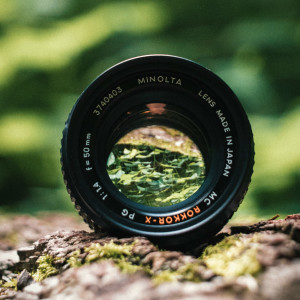 3) In Vipassana, what specifically are we learning to see more clearly?
3) In Vipassana, what specifically are we learning to see more clearly?
In the greater Buddhist system, there are many views or lenses that are helpful to cultivate; such as the importance of being truthful, cause & effect, or how all other beings are worthy of love (no matter what they’ve done).
However, remember that Vipassana is just one facet of the whole Buddhist system, and it primarily focuses on cultivating three specific lenses that are sometimes called “ultimate truth,” or, the ways things really are. A person who has internalized these “Vipassana lenses” is said to be wise, and generally experiences a greater sense of ease, freedom and joy in their life.
I’ve previously elaborated more deeply on these three lenses, but here I’ll present a brief overview on what they’re trying to get us to see more clearly.
1) Inconstancy or Impermanence
The most fundamental “ultimate truth” is inconstancy. This is not a philosophical proposition or some abstract idea that everything that is born will eventually die.
Instead, this lens points us towards our momentary experience. It shows us that everything we can possibly notice is in a constant state of change – external events as much as our feelings, thoughts, sensations, beliefs and everything else inside.
The most basic vipassana instruction will always be, “notice change moment-by-moment-by-moment.” This is somewhat mundane by itself, but it implies the next two lenses, which have major implications for our well-being.
2) Not-self
As we examine our moment-to-moment experience, we start to realize that I am not my thoughts, feelings, sensations, beliefs and so on.
This realization slowly comes as we see those inner states are constantly changing; they are not “self.”
The result is that we develop a source of well-being that’s deeper than our changing mental-emotional states. Life begins to feel increasingly spacious, easeful, and we find a great capacity to respond rather than react to what’s happening.
Importantly, this lens is not saying our inner reality is an illusion or that it doesn’t exist. Instead, we simply notice that everything we believe to be a self is actually changing, and thus is not self.
More precisely, we shift from the core-level view “I am my thoughts & feelings” to “thoughts and feelings are happening.”
3) Suffering
Stemming from the first two lenses, this lens teaches us that whenever we want something to be other than it is, we suffer.
There is certainly value in healthy desires – like the desire to do good in the world, or the desire to get to bed on time. However, the lens of suffering shows us that our wants can really quickly spill into “craving” and “aversion.”
These two states of wanting things to be different have some really tangible agitation, discomfort and unpleasantness.
Again, this isn’t a philosophical idea – it’s a tangible experience. In Vipassana, we use present moment awareness to examine the quality of our impulses, desires, and the way we are constantly running away from discomfort and towards comfort.
When we see this process clearly, we see that suffering is actually optional — we don’t need to make something else happen in order to be deeply happy.
In summary, Vipassana helps us begin to perceive our reality in a way that moves us away from holding onto what’s changing (aka suffering), and move towards a more easeful, free and joyous life.
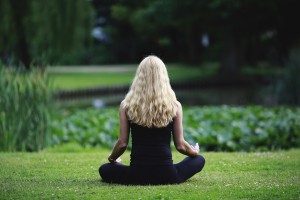 4) How do we actually, tangibly, realistically, do this?
4) How do we actually, tangibly, realistically, do this?
Instead of jumping right into what exactly we’re doing in Vipassana, I first explained the purpose— to see things as they really are, in order that we may let go. Once we get rolling, knowing this can save a lot of time and provide a helpful sense of direction. However, just like reading a map before a journey, it doesn’t really mean anything unless we have a way to actually do it.
In Vipassana meditation, the heart of the practice revolves around mindfulness, or present moment awareness.
In other words, Vipassana is not about thinking, contemplating or therapizing our way to wisdom. It’s about being present, and actually noticing what’s happening from one moment to the next.
There are two basic pillars of mindfulness practice, and until someone is at least moderately proficient in these, it’s unlikely any Vipassana wisdom is going to come. Once again, I’ve covered this in depth elsewhere, so this will be a brief overview:
1) Stabilizing Awareness
When most people begin meditating, they initially experience lots of sleepiness, compulsive thinking, and general reactivity & distraction. In other words, it’s really hard to stay present!
In turn, the initial meditation task usually involves choosing an “anchoring object,” like the breath, the flow of sound, a mantra, or a specific body sensation. We then sit still, and focus our attention on that anchor.
As many times as our attention drifts away, we simply recognize it’s gone off, and gently re-direct it to the anchor.
The process of stabilizing awareness does not involve getting rid of all distractions. It does not mean we stop our thoughts, make sounds disappear and feel completely comfortable in our bodies. Instead, it involves a slow development of the not-self lens, where we learn we don’t have to react to those things and can just let them float on through.
Eventually, we are able to stay with our anchor more often than not, and at this point it isn’t even essential to use an anchor. We can just be mindfully aware of whatever is happening, moment-by-moment-by-moment.
2) Right Attitude
Our attitude is our relationship to what’s happening. There are many attitudes that are useful for meditation, like curiosity, mental relaxation, kindness and patient endurance.
However, the most essential attitude is equanimity, or non-reactive acceptance.
For example, during meditation let’s say we feel really lousy, keep getting caught in thought, and get annoyed by every stray sound.
Equanimity recognizes those are the things that are happening, and gives them full permission to be there. As many times as we drift off or get caught in reactivity, we just acknowledge it, and gently return to our anchor (or awareness itself).
Ironically, the most essential place to bring equanimity is to our reactivity. In spite of all our training, all the books we’ve read, talks we’ve listened to, and wisdom we’ve developed, there will inevitably be times when we notice we’ve gotten reactive — when just want our headache to go away, when we can’t help but be annoyed at a loved one, when we criticize ourself for not being perfect, etc.
Whenever we notice reactivity, resistance or craving, that’s where we bring our equanimity — it’s how we break the loop!
How the Two Pillars Lead to Clear Seeing
The more that Awareness & Right Attitude get established, the easier it becomes to start noticing the truths of inconstancy, not-self and craving is suffering.
In a big way, those lenses just start to happen automatically as our practice deepens. This is because we are not making this stuff up! Things are actually constantly changing, and when we refine our attention, it becomes very obvious!
However, there is a classic three part model of wisdom development, that suggests that reading things like this post, and asking ourselves appropriate questions, can help expedite the process.
To give one example of how this actually unfolds, let’s say we’ve developed relatively stable awareness and right attitude.
We might then meditate with the question, “do I notice the difference between pleasant, unpleasant and neutral feelings in the body?” After we’ve done that for a while, the difference between those three becomes very clear. We then shift to the question, “how does my mind automatically react to those three different types of feelings?”
This type of exploration will gradually show us how our feelings are constantly changing, how we tend to implicitly believe I am my pleasant & unpleasant feelings, and also how we automatically react to them without any conscious choice (which is the opposite of freedom!).
When paired with the two pillars, investigating ourselves like this quickly leads to a deeper self-understanding; or, seeing reality in a new way.
Although, to make all this more simple, the how to do it really just revolves around being mindfully aware of the present. That’s the heart and soul of Vipassana – and everything else tends to naturally follow.
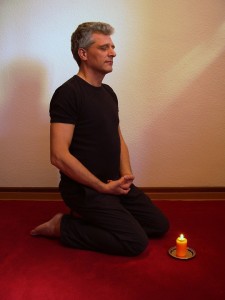
5) The quickest, most efficient way to really learn Vipassana
By practicing it of course!
It can be helpful to read a few books and get a basic orientation; however, we only learn it by actually doing it. It’s important to log time everyday in formal meditation, and also starting to bring in informal practice.
But most people report that they didn’t really learn it until they started going on meditation retreats. Spending a few days or weeks doing nothing but practicing meditation is easily the quickest, most efficient way to really learn Vipassana meditation.
If you’re interested in diving deep, I might recommend the following article:
The Four Reasons People Actually Meditate (Instead of Just thinking About it)
Or, of course, you could also just turn off the screen and go meditate!
